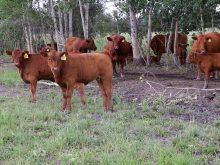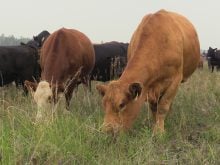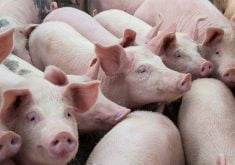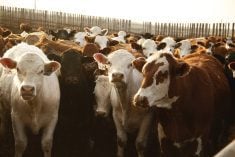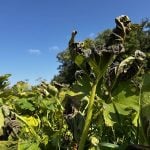Great Britain could teach countries living with the burden of BSE some valuable lessons.
A British veterinarian said recently that many mistakes were made in England during the early days of BSE because little was known of the disease when it was first detected in 1986.
“The media was irresponsible but the government was pretty inadequate in the way it sold the message,” said Danny Matthews, head of the transmissible spongiform encephalopathy program at the British government’s veterinary laboratory agency.
He spoke July 16 in Calgary at an international livestock congress where 400 representatives from Canada, the United States and Mexico gathered to talk about BSE impacts on North America.
Read Also

Feeder market continues the climb
For the week ending Aug. 30, Western Canadian feeder cattle markets traded $4-8 per hundredweight higher on average.
In Britain, no one asked enough questions or plotted possible scenarios of what might happen, he said. Ultimately 35,000 British farms were affected. Most animals were dairy cattle because they received high doses of protein derived from meat and bone meal, likely containing infected material from rendered cattle parts.
By the time anyone realized what they were dealing with, many other countries were infected because of the widespread movement of meat and bone around the world.
Once a connection was made to contaminated feed, rules were quickly written to remove possible sources of infection like brains, spinal cords, glands, eyeballs and other nerve tissues.
However, the government should have closely audited abattoirs and feed mills to ensure they followed the new rules to prevent cross contamination of ruminant meat and bone meal making its way back to cattle and sheep feed, said Matthews. They did not realize one gram of infected material is potentially hazardous.
No one knew consumers were at risk. Mechanically recovered meat scraped from bones and used in processed and ground beef probably contained bits of spinal cord, leading to infection in people. So far, about 150 people have died of variant Creutzfeld-Jakob disease. They probably contracted it early from infected beef although scientists are still not sure how it is transmitted.
After specified risk materials were removed and no animals older than 30 months went into the food chain, people were told beef was safe to eat. But the mistake was not telling them why, said Matthews.
Once other countries learned of the British situation, international trade bans were imposed and the British beef industry nearly collapsed.
It is easy now to complain about the world animal health organization, the OIE, but Matthews believes the lack of understanding of the disease and reluctance to share information worsened problems.
Some countries believed they could keep it out and many established rules over and above what was necessary.
The situation was further compromised by political influence that ignored what science was known. At some point politicians are going to have to allow their scientists to debate the issue.
“The bottom line is how much BSE are we going to be comfortable with because there is no way we can prove we haven’t got it,” he said.
One set of BSE rules does not fit every country. Scientific evidence is critical to make sound decisions on surveillance and control as more is learned about this disease. However, surveillance to prove disease-free status only works if all animals are tested.
“Surveillance has proven to be a root in finding how much BSE we have got,” he said.
No one wants to find trouble and no one is sure when the disease might show up. Animals as young as 20 months and as old as 18 years have been diagnosed in the surveillance sweep. All countries in Europe argued it was against their interests to look for the disease but if they had started testing sooner, they may have alleviated future problems.
“In the early 1990s they missed a lot of BSE.”
Matthews believes France could have had as many as 300,000 cases but the animals were likely culled from herds before serious symptoms appeared. Animals may have appeared less productive so they were removed.
“Some of the signs are so subtle that they may actually have got rid of the cattle because they didn’t recognize it. Mad cows are a minority.”
Once active testing started in Europe, all countries realized they were circulating BSE within their own borders and internationally. He said North America will not likely have an epidemic like Europe, but it could have more cases because if one animal was exposed, others were probably infected as well.



